Volume 21, Issue 2
Displaying 1-10 of 10 articles from this issue
- |<
- <
- 1
- >
- >|
Review
-
2010 Volume 21 Issue 2 Pages 93-97
Published: September 30, 2010
Released on J-STAGE: October 27, 2010
Download PDF (333K) -
2010 Volume 21 Issue 2 Pages 98-106
Published: September 30, 2010
Released on J-STAGE: October 27, 2010
Download PDF (326K)
Original
-
2010 Volume 21 Issue 2 Pages 107-114
Published: September 30, 2010
Released on J-STAGE: October 27, 2010
Download PDF (425K) -
2010 Volume 21 Issue 2 Pages 115-122
Published: September 30, 2010
Released on J-STAGE: October 27, 2010
Download PDF (354K) -
2010 Volume 21 Issue 2 Pages 123-133
Published: September 30, 2010
Released on J-STAGE: October 27, 2010
Download PDF (483K) -
2010 Volume 21 Issue 2 Pages 134-138
Published: September 30, 2010
Released on J-STAGE: October 27, 2010
Download PDF (237K) -
2010 Volume 21 Issue 2 Pages 139-147
Published: September 30, 2010
Released on J-STAGE: October 27, 2010
Download PDF (486K)
Research Note
-
2010 Volume 21 Issue 2 Pages 148-155
Published: September 30, 2010
Released on J-STAGE: October 27, 2010
Download PDF (356K) -
2010 Volume 21 Issue 2 Pages 156-158
Published: September 30, 2010
Released on J-STAGE: October 27, 2010
Download PDF (300K)
Brief Report
-
2010 Volume 21 Issue 2 Pages 159-165
Published: September 30, 2010
Released on J-STAGE: October 27, 2010
Download PDF (6562K)
- |<
- <
- 1
- >
- >|
